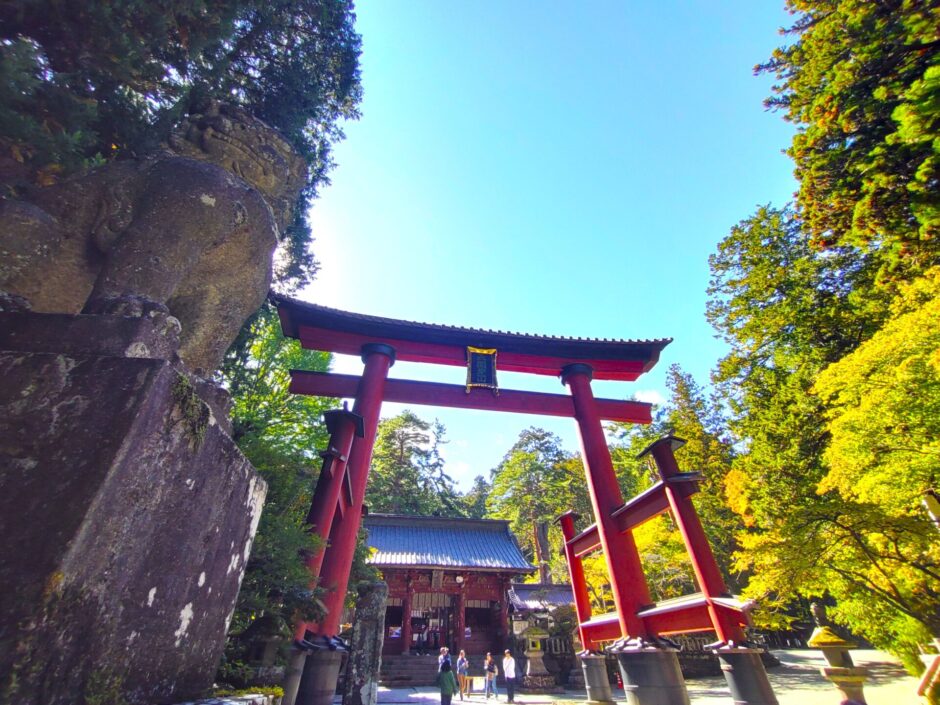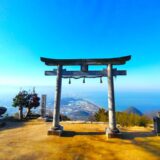【Summary】
Kitaguchi Hongu Fuji Sengen Shrine is one of the many Sengen shrines in Japan and is a component of the World Heritage Mt. Fuji, and is also the starting point of the historic mountain trail from the Fujiyoshida Exit. The “deities” are Konohana-sakuyahime-no-mikoto, Hikohonininigi-no-mikoto, and Oyamazumi-no-mikoto.
![Kitaguchi Hongu Fuji Sengen Shrine [Yamanashi] DSC 0152 1024x768 - Kitaguchi Hongu Fuji Sengen Shrine [Yamanashi]](https://japan-shrine.info/wp-content/uploads/DSC_0152-1024x768.jpg)
【scenery】
The area in front of the shrine’s first torii gate is a very busy national highway, but once you pass through the gate and enter the shrine, you will find yourself in a completely different world. The approach to the shrine stretches straight to the main shrine (and even to Mt. The approach is lined with donated lanterns, all of which are very old. The trees along the approach are large and give a sense of history.
![Kitaguchi Hongu Fuji Sengen Shrine [Yamanashi] DSC 0157 1024x768 - Kitaguchi Hongu Fuji Sengen Shrine [Yamanashi]](https://japan-shrine.info/wp-content/uploads/DSC_0157-1024x768.jpg)
The approach to the shrine is about 300 meters long, lined on both sides by huge cedar and cypress trees more than 300 years old, creating a sacred atmosphere. Gradually, the torii gate came into view.
![Kitaguchi Hongu Fuji Sengen Shrine [Yamanashi] DSC 0187 2 1024x768 - Kitaguchi Hongu Fuji Sengen Shrine [Yamanashi]](https://japan-shrine.info/wp-content/uploads/DSC_0187-2-1024x768.jpg)
This vermilion-red Otorii gate is said to be the largest wooden torii gate in Japan at about 18 meters high. Its appearance was both magnificent and breathtaking.
【premises】
After passing through the Otorii gate and arriving at the front of the hall of worship, two sacred trees, one cedar on the left and the other cypress on the right, stand in a majestic, commanding position, creating a pleasant space filled with the power of nature.
![Kitaguchi Hongu Fuji Sengen Shrine [Yamanashi] DSC 0189 2 1024x768 - Kitaguchi Hongu Fuji Sengen Shrine [Yamanashi]](https://japan-shrine.info/wp-content/uploads/DSC_0189-2-1024x768.jpg)
The water from the bronze dragon’s mouth was said to be melted snow from Mt.
![Kitaguchi Hongu Fuji Sengen Shrine [Yamanashi] DSC 0167 1024x768 - Kitaguchi Hongu Fuji Sengen Shrine [Yamanashi]](https://japan-shrine.info/wp-content/uploads/DSC_0167-1024x768.jpg)
On either side of the hall of worship stand two sacred trees, the 1,000-year-old “Fuji Taro Cedar” and “Fuji Married Couple Hinoki”. The “husband and wife cypress” is said to be rare in that it is made up of two cypress trees that become one near the base, then split up and joined together again. It is designated as a natural monument by Yamanashi Prefecture.
![Kitaguchi Hongu Fuji Sengen Shrine [Yamanashi] DSC 0176 1024x768 - Kitaguchi Hongu Fuji Sengen Shrine [Yamanashi]](https://japan-shrine.info/wp-content/uploads/DSC_0176-1024x768.jpg)
Eleven buildings, including the Main Shrine, East Shrine Main Hall, West Shrine Main Hall, Zuijimon Gate, and the Tezumisha, are designated as National Important Cultural Properties.
![Kitaguchi Hongu Fuji Sengen Shrine [Yamanashi] DSC 0173 1024x768 - Kitaguchi Hongu Fuji Sengen Shrine [Yamanashi]](https://japan-shrine.info/wp-content/uploads/DSC_0173-1024x768.jpg)
Furthermore, Suwa Shrine, a splendid structure for a “regent shrine,” is located in a corner of the Kitaguchi Hongu Fuji Sengen Shrine. This Suwa Shrine is an old shrine that is said to have existed here before the Kitaguchi Hongu Fuji Sengen Shrine was moved to its present location in the Nara period (710-794). The date of construction of the large hall of worship is not certain, but its style and other features suggest that it was built in the mid-Edo period. The large hall of worship is designated as a National Important Cultural Property. The smaller building behind the hall of worship is the main hall, which was destroyed by fire in the early Showa period (early 20th century), but was rebuilt in 1976 (Showa 51).
![Kitaguchi Hongu Fuji Sengen Shrine [Yamanashi] DSC 0190 1024x807 - Kitaguchi Hongu Fuji Sengen Shrine [Yamanashi]](https://japan-shrine.info/wp-content/uploads/DSC_0190-1024x807.jpg)
Fuji trail to the Yoshida-guchi (Mt. Fuji North Exit). Those who climb from the Yoshida-guchi should pass through the torii gate, also called the “climbing gate,” in front of the temple, and pay their respects at the “Ancestral Shrine” before climbing up the mountain.
![Kitaguchi Hongu Fuji Sengen Shrine [Yamanashi] DSC 0192 2 1024x768 - Kitaguchi Hongu Fuji Sengen Shrine [Yamanashi]](https://japan-shrine.info/wp-content/uploads/DSC_0192-2-1024x768.jpg)
About a 5-minute walk from the ancestral shrine is Otsuka Hill. When Yamatotakeru (the son of the Emperor Yamatotakeru) was on his eastern expedition, he stopped here to look at Mt. This is said to be the place where he viewed Mt.
![Kitaguchi Hongu Fuji Sengen Shrine [Yamanashi] DSC 0193 1024x768 - Kitaguchi Hongu Fuji Sengen Shrine [Yamanashi]](https://japan-shrine.info/wp-content/uploads/DSC_0193-1024x768.jpg)
In other words, this is the birthplace of the Kitaguchi Hongu Fuji Sengen Shrine, which originally enshrined the deity Sengen and the deity Nihon no Musun at this location. It is said that the shrine was founded in the 40th year of Emperor Keiko (110), which is older than the present relocated Kitaguchi Asama Shrine. Incidentally, there are many trees now and Mt.
![Kitaguchi Hongu Fuji Sengen Shrine [Yamanashi] DSC 0197 1024x768 - Kitaguchi Hongu Fuji Sengen Shrine [Yamanashi]](https://japan-shrine.info/wp-content/uploads/DSC_0197-1024x768.jpg)
The Yoshida-guchi trail entrance is on the opposite side of the hill from Otsuka Hill (Otsuka-yama). The trail is not well maintained and is difficult to walk on, but it is said that buses used to run along it more than 50 years ago. From here, the climb up Mt.
【letter bearing the shogun’s scarlet seal】
Red seal 300 yen (2023)
【Nearby attractions】
![Kitaguchi Hongu Fuji Sengen Shrine [Yamanashi] DSC 0129 160x160 - Kitaguchi Hongu Fuji Sengen Shrine [Yamanashi]](https://japan-shrine.info/wp-content/uploads/DSC_0129-160x160.jpg) Oshinohakkai [Yamanashi]
Oshinohakkai [Yamanashi]
【Access】
Manager’s comment.
It was a wonderful shrine that reminded us that climbing Mt. Fuji has been rooted in the deep faith of the common people since ancient times, and that this shrine is here as a large presence to receive that faith.
 Tour of Japanese shrines and temples
Tour of Japanese shrines and temples 

